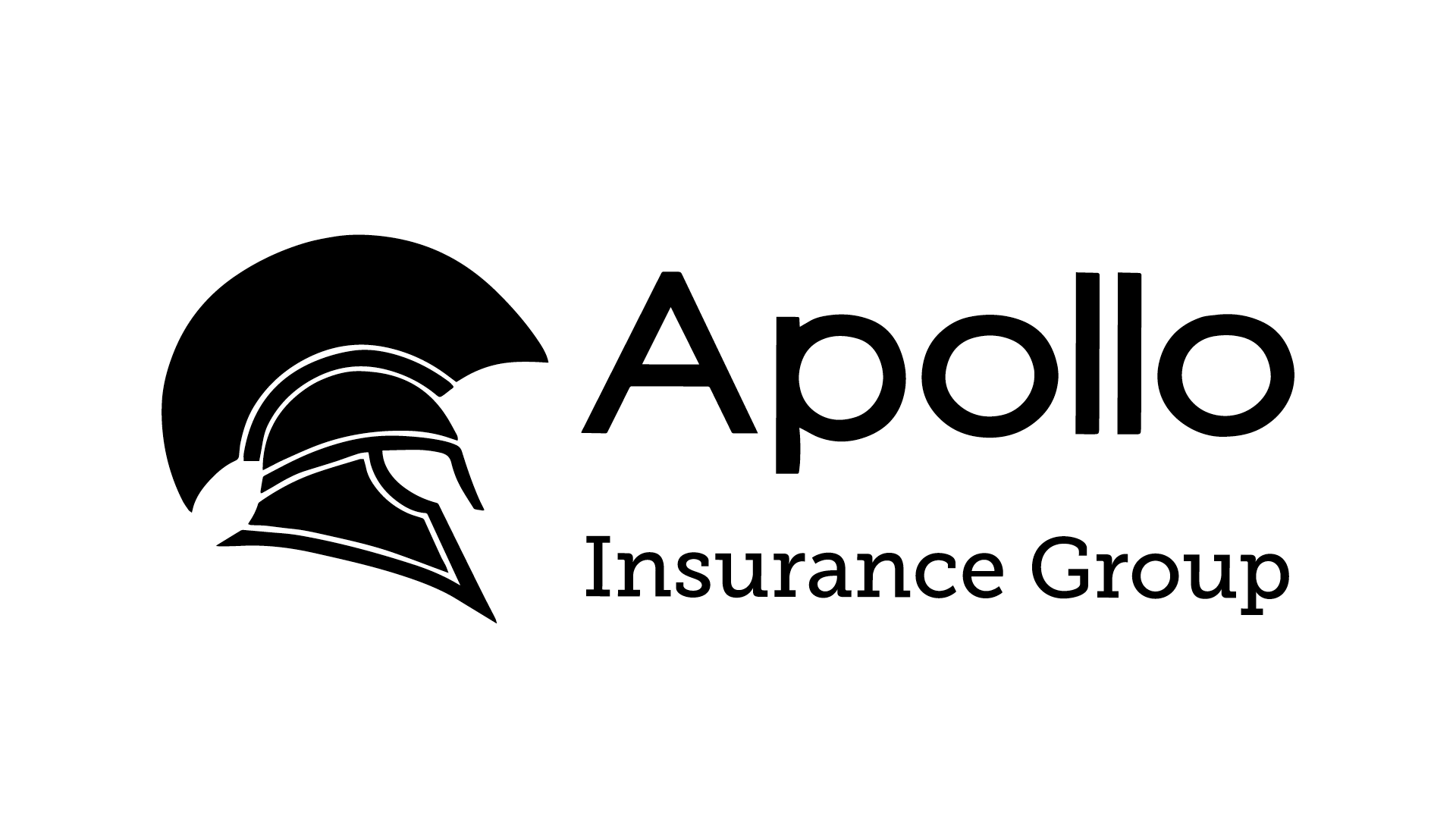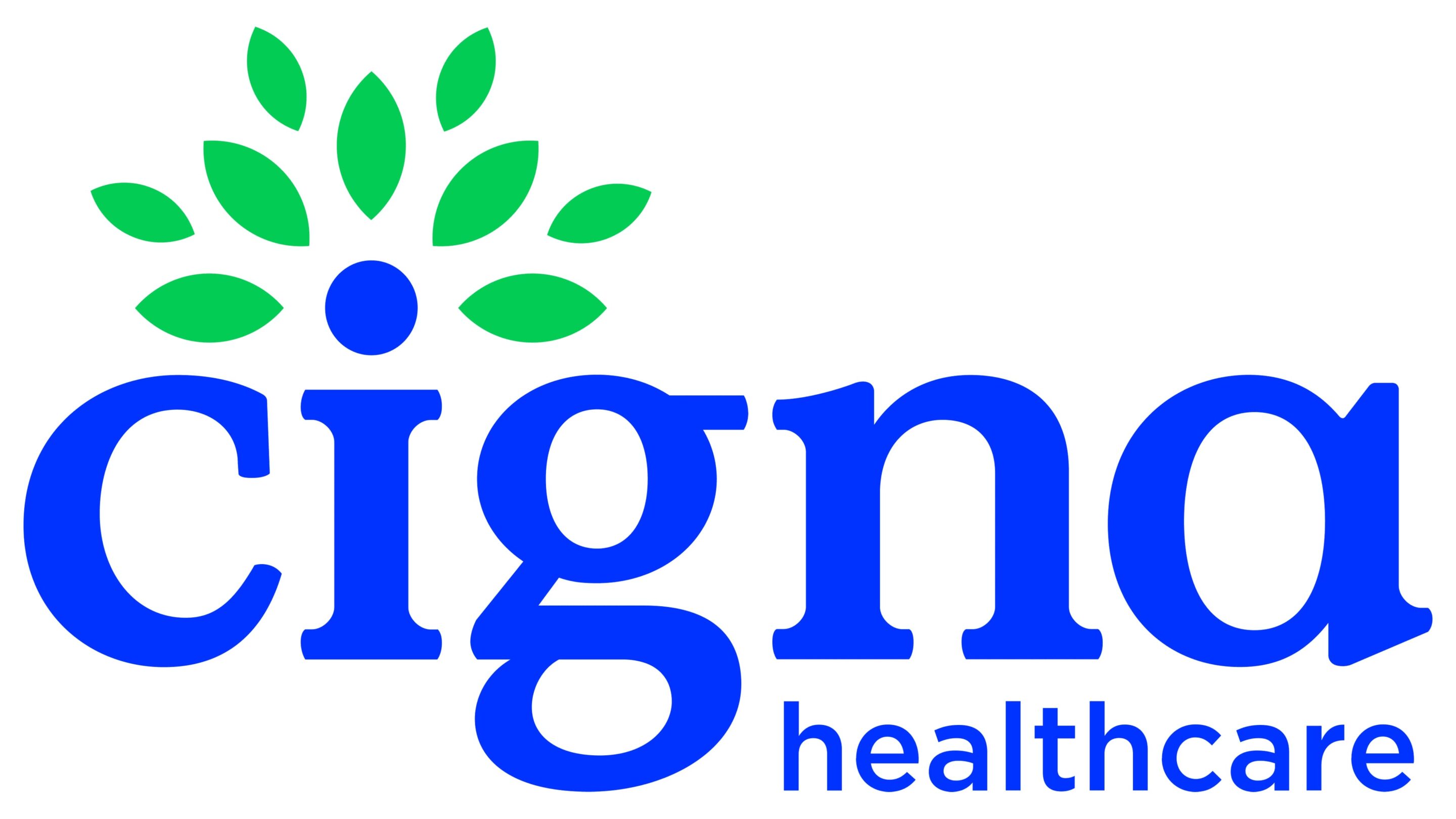
Call For Free Help 816-400-4477
Losing Medicaid Coverage?
We Can Help! Get Enrolled With A Marketplace Plan For $0 A Month
Connect with a health pro for free quotes and enrollment services
(No Extra Cost)
Benefits of Medicaid Alternatives Health Plans
There are numerous advantages associated with having health insurance.
Primarily, it acts as a financial safeguard in the event of accidents or illnesses. The absence of health insurance would leave you accountable for fully funding your medical expenses, which could rapidly accumulate into significant costs.
Moreover, health insurance aids in offsetting the expenses of preventive care, encompassing regular check-ups and screenings. This proactive approach aids in the early detection and manageable treatment of health issues.
Ultimately, health insurance offers reassurance, ensuring that you and your loved ones are covered during potential health crises.

What Do You Do If You Lose Medicaid Coverage?
10 Things to Know About the Unwinding of the Medicaid

Health Insurance Benefits for Self Employed
At the onset of the pandemic, the Families First Coronavirus Response Act (FFCRA) was enacted by Congress. This legislation mandated that Medicaid programs maintain enrollees’ coverage until the last day of the month in which the COVID-19 public health emergency (PHE) concluded, in exchange for increased federal funding.
Due to this provision for continuous enrollment, the Medicaid recipient count has notably surged since pre-pandemic times, leading to a reduction in the number of uninsured individuals. However, the expiration of the “continuous enrollment” rule has the potential to trigger the loss of coverage for millions, thereby negating recent coverage progress.
The Consolidated Appropriations Act, 2023, signed into law on December 29, 2022, stipulated March 31, 2023 as the termination date for the continuous enrollment provision. Furthermore, it gradually reduced the enhanced federal Medicaid matching funds until December 2023. States that accept the additional federal funding can begin withdrawing from the program from April onwards, subject to fulfilling specific reporting and other prerequisites during this period.
This concise overview delves into ten key aspects concerning the conclusion of the Medicaid continuous enrollment requirement. It underscores pertinent data and analyses to facilitate the discontinuation process, along with recent legislative developments and guidance from the Centers for Medicare and Medicaid Services (CMS) aimed at assisting states in preparing for the conclusion of the continuous enrollment provision.
1: Since the start of the pandemic, more people have signed up for Medicaid, mostly because of the “continuous enrollment” rule.
In October 2022, Medicaid and CHIP enrollment reached 91.3 million, surging by over 28.5% from February 2020. This rise is due to pandemic-driven economic effects, state Medicaid expansions under the Affordable Care Act (NE, MO, OK), and the Families First Coronavirus Response Act (FFCRA), enabling continuous enrollment.
To secure additional federal funding, states were required to maintain uninterrupted Medicaid coverage until the public health emergency (PHE) ended.
This approach preserved coverage during the pandemic by preventing enrollee terminations. A 6.2 percentage point increase in the federal match rate (FMAP) balanced the higher state costs, according to KFF.
The Medicaid continuous enrollment rule has been disassociated from the PHE through the Consolidated Appropriations Act of 2023.
This provision concludes on March 31, 2023.
From April 1, 2023, states can again terminate Medicaid coverage.
Adhering to rules, the enhanced FMAP will decrease by 6.2 percentage points until March 2023, 5 percentage points until June 2023, 2.5 percentage points until September 2023, and 1.5 percentage points until December 2023.
As stipulated by the FFCRA, states can’t alter eligibility criteria, procedures, or methods, nor can they raise premiums. Federal renewal regulations must also be followed. States are obliged to maintain current contact details and attempt communication before discontinuing coverage due to returned mail.

2. The KFF thinks that between 5 million and 14 million people will lose Medicaid coverage when the continuous enrollment provision ends.
Millions are anticipated to be impacted by Medicaid enrollees losing coverage during the unwinding period.
KFF suggests that within the 12-month phase, 5.3 to 14.2 million might lose coverage, considering both a 5% and a 13% total enrollment decline (Figure 2). The lower estimate accommodates new entrants and those exiting and rejoining within a year, while the higher estimate focuses solely on those leaving, excluding new enrollees.
The Department of Health and Human Services (HHS) predicts up to 15 million coverage losses, including roughly 6.8 million who might remain eligible.
These projections closely align with, albeit slightly below, the expected numbers. Variation in state renewal strategies will impact dropout rates, particularly affecting ACA expansion adults, other adults, and children who gained most from continuous enrollment.
Sustaining outreach, education, and enrollment support can secure Medicaid eligibility and assist ineligible individuals in exploring alternative insurance choices.

3. The Medicaid “churn” has stopped because of the “continuous enrollment” rule.
“Churn” refers to individuals exiting and rejoining Medicaid briefly, leading to coverage gaps.
Factors include temporary income or situational changes causing brief ineligibility. Some eligible individuals struggle with renewals and checks, potentially losing coverage due to missed notices or incomplete forms. These fluctuations add complexity and costs.
Around 10.3% of 2018 full-benefit beneficiaries experienced gaps under a year.
Among dropouts, about 4.2% returned in three months, and 6.9% in six months.
A study on children joining Medicaid in July 2017 found a doubled dropout rate after annual renewals, impacting eligible children.
Continuous enrollment curbed this churn by halting dropouts during the public health emergency (PHE).

4. The states have to make plans for how they will go back to normal when the continuous enrollment provision ends.
“Churn” refers to individuals exiting and rejoining Medicaid briefly, leading to coverage gaps.
Factors include temporary income or situational changes causing brief ineligibility. Some eligible individuals struggle with renewals and checks, potentially losing coverage due to missed notices or incomplete forms. These fluctuations add complexity and costs.
Around 10.3% of 2018 full-benefit beneficiaries experienced gaps under a year.
Among dropouts, about 4.2% returned in three months, and 6.9% in six months.
A study on children joining Medicaid in July 2017 found a doubled dropout rate after annual renewals, impacting eligible children.
Continuous enrollment curbed this churn by halting dropouts during the public health emergency (PHE).

At the start of the pandemic, Congress passed the Families First Coronavirus Response Act (FFCRA). This law included a requirement that Medicaid programs keep people enrolled until the end of the month in which the COVID-19 public health emergency (PHE) ends, in exchange for more federal funding. Because of the continuous enrollment provision, the number of people on Medicaid has grown a lot since before the pandemic, and the number of people without health insurance has gone down. But when the “continuous enrollment” rule is no longer in place, millions of people could lose coverage, which could wipe out any coverage gains made recently. As part of the Consolidated Appropriations Act, 2023, which was signed into law on December 29, 2022, Congress set March 31, 2023 as the end date for the continuous enrollment provision and phased down the increased federal Medicaid matching funds until December 2023. States that accept the extra federal money can start dropping out of the program again in April, but they have to meet certain reporting and other requirements during this time.
This brief talks about 10 key points about the ending of the Medicaid continuous enrollment requirement. It highlights data and analyses that can help with the ending process, as well as recent legislation and guidance from the Centers for Medicare and Medicaid Services (CMS) to help states get ready for the end of the continuous enrollment provision.
1: Since the start of the pandemic, more people have signed up for Medicaid, mostly because of the “continuous enrollment” rule.
Total enrollment in Medicaid/CHIP rose to 91.3 million in October 2022, which is more than 28.5% more than in February 2020. (Figure 1). Overall enrollment increases may be caused by the pandemic’s effect on the economy, the expansion of Medicaid under the Affordable Care Act in several states (NE, MO, OK), and the provision in the Families First Coronavirus Response Act that lets people sign up at any time (FFCRA). For states to get more federal money, this rule says that Medicaid enrollees must have continuous coverage until the end of the month in which the public health emergency (PHE) ends. The continuous enrollment provision has helped to keep coverage going during the pandemic by stopping states from taking people off of coverage. KFF estimates that the increased federal funding from a 6.2 percentage point increase in the federal match rate (FMAP) more than made up for the higher state costs. This is because the continuous coverage provision increased state spending on Medicaid.
The Medicaid continuous enrollment provision is no longer tied to the PHE because of the Consolidated Appropriations Act of 2023. This provision will end on March 31, 2023. On April 1, 2023, states can again drop people from Medicaid. If states follow the rules, the enhanced FMAP will go down by 6.2 percentage points until March 2023, 5 percentage points until June 2023, 2.5 percentage points until September 2023, and 1.5 percentage points until December 2023. As required by the FFCRA, they can’t change eligibility standards, methods, or procedures, and they can’t raise premiums. Also, states must follow federal rules about how renewals are done. Lastly, states are required to keep contact information up to date and try to get in touch with enrollees before they drop out of the program when mail is returned.
2. The KFF thinks that between 5 million and 14 million people will lose Medicaid coverage when the continuous enrollment provision ends.
There is a lot of uncertainty about how many Medicaid enrollees will lose coverage during the unwinding period, but it is thought that millions will lose coverage. KFF estimates that between 5.3 million and 14.2 million people will lose Medicaid coverage during the 12-month unwinding period. This is based on two examples: a 5% drop in total enrollment and a 13% drop in enrollment (Figure 2). The lower estimate takes into account things like new people joining the program and people dropping out and then rejoining it within the same year. The higher estimate, on the other hand, just looks at the total number of people dropping out and doesn’t take into account churn or new enrollees. Estimates from the Department of Health and Human Services (HHS) say that as many as 15 million people will lose coverage, including 6.8 million who will probably still be eligible. These projected coverage losses are about the same as, but a bit lower than, those estimates. Different states will prioritize renewals in different ways, so the number of people who drop out will vary from state to state. However, the groups that grew the most because of the continuous enrollment provision—ACA expansion adults, other adults, and children—are likely to see the biggest drops in enrollment. Outreach, education, and help with enrollment can help make sure that people who are still eligible for Medicaid can keep their coverage and that people who are no longer eligible can find other ways to get insurance.
3. The Medicaid “churn” has stopped because of the “continuous enrollment” rule.
People lose Medicaid coverage for a short time when they drop out and then sign up again within a short time. This is called “churn,” and it happens for a number of reasons. People who are signed up may have short-term changes in their income or situation that make them temporarily ineligible. On the other hand, some people who are still eligible may not be able to keep their coverage due to renewal processes and regular checks of eligibility. People who are eligible for coverage could lose it if they don’t get or understand notices or forms asking for more information to verify eligibility or if they don’t respond to requests in the time allowed. Change can make it harder for people to get in and cost more to run. Estimates show that 10.3% of full-benefit beneficiaries who were enrolled at any time in 2018 had coverage gaps of less than a year (Figure 3). About 4.2% of people who dropped out of the program signed up again within three months, and 6.9% did the same within six months. Another study that looked at a group of children who joined Medicaid for the first time in July 2017 found that the rate of children leaving the program more than doubled after the annual renewal. This suggests that many eligible children lose coverage at renewal. The continuous enrollment provision has stopped this churning among Medicaid enrollees by stopping people from dropping out during the PHE.
4. The states have to make plans for how they will go back to normal when the continuous enrollment provision ends.
CMS requires states to make plans for how they will handle the process of ending Medicaid. These plans must explain how the state will decide which renewals are most important, how long the state thinks it will take to finish the renewals, and what processes and strategies the state is considering or has already put in place to keep coverage from being lost when it shouldn’t be. Informational Bulletins (CIBs) were sent out on January 5, 2023. They told states when they needed to submit a plan for redistributing renewal funds.
In January 2022, KFF did a survey to find out what the states were doing to get ready for the end of the continuous enrollment provision (Figure 4). 28 states said they had decided on a plan for how to prioritize renewals, and 41 said they planned to take a year to finish all renewals (the remaining 10 states said they planned to take less than 12 months to complete renewals or they had not yet decided on a timeframe).
Most states also said they were taking steps to update contact information for enrollees and would check in with them before ending coverage. But the situation is changing. As of February 3, 2023, 41 states had posted their full plan or a summary of their plan online. How states handle the process of ending coverage will affect whether people who are eligible can keep their coverage and whether people who are no longer eligible can switch to other coverage. Different states will have different results because they make different decisions and have trouble finding a good balance between the number of workers, the amount of work, and financial pressures.
5. Streamlining renewal processes as much as possible can help make sure coverage stays the same after the continuous enrollment provision ends.
Under the Affordable Care Act, states must try to complete administrative (or “ex parte”) renewals by verifying ongoing eligibility through available data sources, such as state wage databases, before sending a renewal form or asking an enrollee for proof. Some states stopped renewals while they put in place the provision for continuous enrollment and made other changes related to COVID. Renewals are easier for enrollees to do if they can check electronic data sources to make sure they are still eligible. But in many states, only a small number of renewals are done on an ex parte basis. Only 11 of the 42 states that handle ex parte renewals for MAGI groups (people whose eligibility is based on their modified adjusted gross income) say that 50% or more of the renewals are done this way. Twenty-two states do less than 50% of their renewals outside of court, and 11 of those states do less than 25% of their renewals outside of court (Figure 5). The number of states that say they use ex parte processes to finish more than 50% of renewals for non-MAGI groups (people who are eligible because they are over 65 or have a disability) is even lower, at 6.
As states go back to normal operations after the continuous enrollment provision ends, there are ways to help enrollees who are still eligible keep their coverage by increasing the number of renewals done using ex parte processes and taking other steps to make renewals easier (which will also tend to increase enrollment and spending). In recent guidance, CMS says that states can increase the number of ex parte renewals they do without having to contact the enrollee by using more data sources to confirm that the enrollee is still eligible. But when states do need to follow up with enrollees to get more information to make sure they are still eligible, they can make it easier for enrollees to send information by letting them send it by mail, in person, over the phone, or online. Almost all states accept information by mail and in person, but only 39 states and the District of Columbia allow people to send information over the phone or through online accounts (41 states). The proposed rule, which came out on September 7, 2022, wants to make enrollment and renewal easier in the future by applying the same rules to both MAGI and non-MAGI populations. For example, renewals would only be allowed once a year, in-person interviews would be banned, and pre-filled renewal forms would be required.
6. States can get temporary waivers to do things that will help their plans to wind down.
As states get ready to do redeterminations for all Medicaid enrollees after the continuous enrollment provision ends, many may face big problems because they don’t have enough staff or their systems are old. CMS said that temporary waivers are available through Section 1902(e)(14)(A) of the Social Security Act. This is to make it easier for states to handle administrative tasks. These waivers will only be available for a certain amount of time. They will allow states to make it easier for some enrollees to renew their coverage, with the goal of reducing the number of procedure terminations. CMS had approved 158 waivers for 41 states as of January 10, 2023. (Figure 6). These waivers include strategies that allow states to: renew enrollee coverage based on SNAP and/or TANF eligibility; allow for ex parte renewals of individuals with zero income verified within the last 12 months; allow for renewals of individuals whose assets cannot be verified through the asset verification system (AVS); partner with managed care organizations (MCOs), enrollment brokers, or use the National Change of Address (NCOA) database or US postal service (USPS) to re-enroll enrollees; and
7. People who have moved since the start of the pandemic, people with limited English proficiency (LEP), and people with disabilities may be more likely to lose Medicaid coverage when the continuous enrollment provision ends.
When the continuous enrollment provision ends and states go back to redeterminations and disenrollments, some people are more likely to lose their Medicaid coverage or have a gap in coverage because it is hard for them to finish the renewal process, even if they are still eligible for coverage. People who are on Medicaid and have moved may not get important renewal and other notices if they haven’t told the state Medicaid agency that their contact information has changed. In 2020, one in ten Medicaid enrollees moved within their own state. In recent years, the number of Medicaid enrollees who moved within their own state has been going down, but that could have changed in 2021 and 2022. A recent study of children’s churn rates found that all children’s churn rates went up, but Hispanic children’s churn rates went up the most, which suggests that they face more problems keeping their coverage. Also, people with limited English proficiency (LEP) and people with disabilities are more likely to have trouble getting the information they need because of language and other barriers. An analysis of state Medicaid websites showed that while most states translate their online application landing page or PDF application into other languages, most only do so for Spanish (Figure 7). The same analysis showed that most states have general information about reasonable modifications and teletypewriter (TTY) numbers on or within one click of their homepage or online application landing page (Figure 8). However, fewer states have information about how to get applications in large print or Braille or how to get American Sign Language interpreters.
In guidance from CMS about the end of the continuous enrollment provision, it is stressed how important it is to reach out to enrollees to update their contact information and how to work with other groups to make it more likely that enrollees’ addresses and phone numbers are up to date. CMS guidance also lists specific steps that states can take, such as making sure forms and notices can be read by people with limited English proficiency (LEP) and people with disabilities and reviewing communication strategies to make sure information can be read. To keep these people from losing coverage or having gaps in it, it will be important to make sure they can get information, forms, and help.
8. States can do outreach together with MCOs, community health centers, and other groups.
As the end of the continuous enrollment provision gets closer, states can work with health plans and community groups to spread the word to enrollees that they need to do their annual renewal during the time when the provision is being phased out. CMS has told states that they can let MCOs update contact information for enrollees and make it easier for them to stay enrolled. A survey of Medicaid safety-net health plans that are not-for-profit found that states work with these MCOs in a number of ways. Most of the responding MCOs said they are sending updated member contact information to their state; almost all said their state plans to send monthly files on members for whom the state is starting the renewal process, and more than half said that information would include members who have not sent in renewal forms and are at risk of losing coverage; and more than half of plans said their state plans to send periodic files indicating which members have not sent in renewal forms and are at risk of losing coverage.
States can also work with community health centers, navigators and other helper programs, and community-based organizations to provide information to enrollees and help them update their contact information before the continuous enrollment period ends, finish the Medicaid renewal process, and switch to other coverage if they are no longer eligible. In a survey of health centers done at the end of 2021, nearly half of the centers that answered said they have or plan to contact their Medicaid patients to remind them to renew their coverage and set up appointments to help them do so. Also, a survey of Marketplace assister programs found that they were planning a variety of outreach efforts, such as public education events and targeted outreach in low-income communities, to let people know about the end of the continuous enrollment provision (Figure 9). Also, almost six out of ten assister programs said they had reached out to their state to find ways to help consumers. They said they supported the state giving them contact information on people who need to renew their Medicaid coverage and that they planned to get in touch with Medicaid clients again to update their information.
9. Up-to-date data on people dropping out of the program and other metrics will help track how the unwinding is going.
On January 5, 2023, CMS released an Informational Bulletin with deadlines for states to submit a renewal redistribution plan (which we talked about above), system readiness plans and results, and baseline unwinding data based on when states plan to start renewals. These requirements for reporting are part of a large set of guidance documents that CMS has put out over the past few months. For the system readiness report, states must show that their systems for processing renewals of eligibility are working properly. This is especially important since states haven’t been doing normal renewals while the continuous enrollment provision has been in place. For enrollment reporting, states will give baseline data about applications, enrollment, estimated timeframes for completing initiated renewals, and fair hearings at the beginning of the unwinding period. Then, states will send monthly reports that will be used to track these metrics throughout the unwinding period (Figure 10). In the recent CIB, it is said that CMS is expected to issue guidance about how the new reporting requirements (discussed below) may interact with the requirements described in previous CMS guidance.
The recently passed Consolidated Appropriations Act gives states more reporting requirements and punishes states that don’t follow them by cutting their federal matching payments. With these new metrics, states have to report the total number of people whose coverage was renewed and the number of people whose coverage was renewed on an ex parte basis. They also have to break down Medicaid terminations for children’s coverage and coverage related to pregnancy, report the number of people whose coverage was terminated for procedural reasons, including breakdowns for children’s coverage and coverage related to pregnancy, and report the total call center volume, average wait time, and average abandonment rate. States must also report on changes to separate CHIP programs and to coverage through the Marketplace or Basic Health Program (Figure 10). Importantly, the law says that these reports must be made available to the public. States that don’t meet these reporting requirements could lose up to one percentage point of their federal medical assistance percentage (FMAP) for each quarter that they don’t meet the requirements. If CMS finds that a state is not following any applicable redetermination and reporting requirements, it can ask the state to submit a corrective action plan and stop all or some terminations until the state takes the right steps to fix the problem.
Collectively, these metrics are meant to show how far states have come in restoring timely application processing and starting and finishing renewals of eligibility for all Medicaid and CHIP enrollees. They can also help monitor the unwinding process to find problems as they arise. But even though the new data reporting requirements are helpful, they won’t give a full picture of how the dismantling is going or if some groups are having trouble keeping their coverage. To fully measure the effects of the rollback, we will need to look at a wider range of outcomes, such as continuity of coverage across Medicaid, CHIP, the Marketplace, and employer coverage, gaps in coverage over time, and increases in the number of people who don’t have insurance. Unfortunately, we won’t have this information in the near future.
10. The number of people who don’t have health insurance could go up if people who lose their Medicaid coverage can’t switch to another plan.
The number of people without health insurance dropped to 8.6% in 2021, the same as the historic low in 2016. This was mostly due to more people getting Medicaid coverage and, to a lesser extent, more people getting coverage through the Marketplace. But these coverage gains could be lost if states start dropping people from Medicaid again after the continuous enrollment provision ends. CMS guidance tells states how to simplify processes and use other methods to cut down on the number of people who lose coverage even though they are still eligible. But some people who are already enrolled will find out that they are no longer eligible for Medicaid. They may, however, be eligible for the ACA marketplace or other coverage. A MACPAC study looked at how adults and children who were kicked off Medicaid or separate CHIP (S-CHIP) changed their coverage. The study found that very few adults or children switched to federal Marketplace coverage, and only 21% of children switched from Medicaid to S-CHIP, while 47% of children switched from S-CHIP to Medicaid (Figure 11).
A KFF analysis found that of the people who dropped out of Medicaid, about two-thirds (65%) went without insurance at some point in the year after dropping out, and only 26% got coverage from another source for the whole year after dropping out (Figure 12). All of these results show that people have trouble switching from Medicaid to other coverage programs, like S-CHIP. People who are no longer eligible for Medicaid might lose their health insurance if these changes aren’t made easier and fewer barriers are put in the way. Importantly, these results also show that a lot of people who sign up for Medicaid (41 percent in the KFF analysis) sign up again after a while, and many do so after going without insurance for a while. Reducing the number of people who lose coverage for administrative reasons even though they are still eligible can also help reduce the number of people who lose insurance.
The proposed eligibility and enrollment rule is meant to make it easier for people to switch between Medicaid and CHIP. It would require both programs to accept eligibility decisions from the other program, come up with ways to send account information electronically, and send out combined notices. States can also share information with Marketplace assister programs about people losing Medicaid who may be eligible for Marketplace coverage. However, in a recent survey, only 29% of assister programs expected states to give them this information, even though almost half of them didn’t know what their state’s plans were.
If You Have Been Affected By Loss Of Medicaid Coverage, We Can Help You Get Health Coverage For $0 A Month. Contact Us to Get Free Enrolment Help
Medicaid Health Insurance Definitions
Premium
A monthly payment you have to make to keep your insurance plan.
Deductible
The amount of money you have to pay on your own for your medical needs before your insurance will start assisting. This will be an annual amount.
Copay
A flat rate you pay per health service, like $10 per doctor’s visit or $5 per bottle of medication. Your insurance will cover the rest.
Co-insurance
A percentage you pay for the cost of each health service. For example, on a 10% coinsurance plan you would pay 10% of each doctor visit, medical procedure, etc. before your insurance covered the rest.
Maximum Out of Pocket
The most money a consumer can spend on out-of-pocket healthcare related expenses for the year. Once the maximum out of pocket is met, the remaining bills are paid 100% by the insurance company.

Talk With A Helpful Agent!
Frequently Asked Questions About Health Insurance
What's the best way to look for health insurance?
When shopping for health insurance, it is important to work with an agent or broker who can help you understand the many options available. Agents have access to all the plans on the market, and they can help you find the best one for your needs. With their help, you can avoid getting overwhelmed by the process and make sure you are getting the best coverage possible.
How do you find the right health insurance plan?
The first step is to figure out what’s important to you. Do you need a plan with a low monthly premium? Does your budget allow for a plan with a higher deductible? Are you looking for a PPO or EPO plan? Do you have any preexisting conditions that must be covered? Once you know what’s important to you, it’ll be easier to find the right health insurance plan.
How do I save money when dealing with insurance?
There are a few different ways that people can save money on their insurance premiums. One way is to purchase a plan that is not based on the individual’s income. These plans can be found on the private market, and they typically have lower premiums than the traditional group or ACA plans.
Another way to save money on insurance is to shop around for the best deals. Different insurers offer different rates, so it’s important to compare and contrast the different options available.
Finally, it’s also important to be aware of the subsidies that are available through the Affordable Care Act. Many people are eligible for subsidies, which can help reduce the cost of premiums.
Contact Us
Contact Us To Get Affordable Health Coverage In Maryland For Your Needs At No Extra Cost!
Call 816-400-4477
Individual Health Insurance
Insurance can be complicated. Between the dozens of providers, changing laws, different kinds of insurance, and so many options, it's a challenge to navigate and find the right plan for your budget and needs.
That's where an insurance broker can help. Apollo are the experts in health insurance and will fight for you. There's no extra cost to you and you'll have an insurance person to always turn to.
Group Health Insurance
Do you want to provide an affordable insurance option for your employees?
Or maybe your employees are already insured but the cost has increases. It may be time to shop for a better group plan. Having health insurance through an employer is an additional way to acquire and keep talent. Connect with Apollo to find the best group insurance plan for you and your employees.
Life Insurance
Let's be honest, we often don't think about the extremes of what could happen in life. Life insurance is the least purchased kind of insurance even though plans start at only a few dollars a month. If you want to make sure your family is taken care of, this simple insurance can have a huge effect in case of death.
Dental Insurance
A good smile can be worth a million dollars.
Everyone can benefit to good oral care and the cost of emergencies can be quite large. Luckily there are flexible dental insurance plans for everyone. Contact us to get a dental plan that works for your budget.
Vision Insurance
Our eyes are one of our most precious organs, and we only have two, so proactive protection and care is key to maintaining these vital organs! Particularly for children, they don’t yet know how beautiful the world is through perfect vision, it is our responsibility as parents and caretakers to be in-tune with the world through their eyes. On the flip side, as we age our eyes do as well, and thus the frequency for vision checks increases exponentially.

Talk With A Helpful Licensed Sales Agent!
We'll Handle All Your Insurance Needs With No Extra Cost.
No obligation to enroll.

Call For Health Insurance Help 816-400-4477
Health Insurance Quotes for Self Employed
Get the Peace of Mind Knowing You’re Covered
– Range of plans available to fit individual needs
– Competitive quotes for coverage that can help protect against costly medical bills
– Fast and hassle-free quotes as well as discounts for self-employed customers
– Self-employed individuals can receive personalized advice and guidance
Connect with a health expert today!
Group Health Insurance Costs
The cost of group health insurance varies depending on a number of factors, including:
- The size of your company: The larger your company, the more likely you are to get a better deal on group health insurance.
- The age of your employees: Older employees are more likely to use health insurance, so their premiums will be higher.
- The health status of your employees: Employees with pre-existing conditions may have to pay higher premiums.
- The type of plan you choose: The more comprehensive the plan, the higher the premiums will be.
- The location of your company: The cost of health insurance can vary from state to state.
In general, the average cost of group health insurance for a single employee is about $500 per month. The cost for family coverage is typically about $1,500 per month. However, these costs can vary significantly depending on the factors listed above.
Employers typically pay a portion of the cost of group health insurance for their employees. The amount that the employer pays is up to the employer, but most employers pay at least 50% of the premium.
There are a number of ways to save money on group health insurance. One way is to choose a high-deductible plan. High-deductible plans have lower premiums, but you will have to pay more out of pocket for covered services before your insurance kicks in. Another way to save money is to choose a plan with a narrower network of providers. Narrower networks typically have lower premiums, but you will have fewer choices of doctors and hospitals.
If you are considering offering group health insurance to your employees, it is important to compare quotes from different insurers. You can also talk to a health insurance broker or agent to help you find a plan that meets your needs and budget.
Top 5 Carriers for the Affordable Care Act

UnitedHealthcare
UnitedHealthcare is the largest health insurer in the United States, and it offers a wide range of group health plans. The company has a strong track record of customer satisfaction, and it offers plans that are affordable and comprehensive.

Anthem
Anthem is another large health insurer that offers a wide variety of group health insurance plans. The company has a strong presence in the Midwest and Southeast, and it offers a number of features that make it a good choice for employers, such as 24/7 customer service and a variety of plan options.

Aetna
Aetna is a well-known health insurer that offers a wide variety of group health insurance plans. The company has a strong reputation for customer service, and it offers a number of features that make it a good choice for employers, such as online enrollment and claims processing.

Cigna
Cigna is a large health insurer that offers a wide variety of group health insurance plans. The company has a strong presence in the Northeast and West Coast, and it offers a number of features that make it a good choice for employers, such as online enrollment and claims processing.

Humana
Humana is a large health insurer that offers a variety of group health insurance plans. The company has a strong network of providers, and its plans offer competitive premiums.
These are just a few of the top carriers for group health insurance in the United States. When choosing a carrier, it is important to compare quotes from different insurers and to consider the needs of your employees.

Apollo Insurance Group
Official Health Insurance Brokers
As we live out our mission to Positively Impact People’s Lives, we battle for you and all your health insurance needs.
Health Insurance Testimonials
I don't know much about insurance, but I know these are the people I want to work with. My rep has been Matt Sisk for the last two years and I hope he's my rep for the next fifty. Best customer service I've ever received, very quick responses, and very personable. He even asked me about my cat. Can't exaggerate it enough, if you get the opportunity ask for Matt Sisk. 10/10, he's so great
Ashley - Happy Client
I had the pleasure of working with Jacob Katzfey during Open Enrollment. He directed me to the right policy for my situation. His professionalism and ability to explain all the policy benefits made the process super easy and stress free. Thanks you for all your help.
Randy - Happy Client
Austin has been fantastic to work with. This was my first time getting an individual plan and he really helped me through out the whole process. I have already recommended him to many friends and family because I was so impressed with the high quality service he provided me. Thank you so much Austin for all your help and hard work.
Brik - Happy Client
Contact Us
Contact Us To Get Affordable Health Coverage In Maryland For Your Needs At No Extra Cost!
Call 816-400-4477

